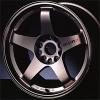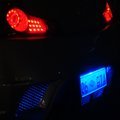Full Floating Brake Rotors
Announcements
-
Similar Content
-
Latest Posts
-
Well, yeah, the RB26 is definitely that far off the mark. From a pure technology point of view it is closer to the engines of the 60s than it is to the engines of the last 10 years. There is absolutely nothing special about an RB26 that wasn't present in engines going all the way back to the 60s, except probably the four valve head. The bottom end is just bog standard Japanese stuff. The head is nothing special. Celicas in the 70s were the same thing, in 4cyl 2 valve form. The ITBs are nothing special when you consider that the same Celicas had twin Solexes on them, and so had throttle plates in the exact same place. There's no variable valve timing, no variable inlet manifold, which even other RBs had either before the 26 came out or shortly afterward. The ECU is pretty rude and crude. The only things it has going for it are that the physical structure was pretty bloody tough for a mass produced engine, the twin-turbos and ITBs made for a bit of uniqueness against the competition (and even Toyota were ahead on the twin turbs thing, weren't they?) and the electronic controls and measuring devices (ie, AFMs, CAS, etc) were good enough to make it run well. Oh, and it sounds better than almost anything else, ever. The VR38 is absolutely halfway between the RB generation and the current generation, so it definitely has a massive increase in the sophistication of the electronics, allowing for a lot more dynamic optimisation of mapping. Then there's things like metal treatments and other coatings on things, adoption of variable cam stuff, and a bunch of other little improvements that mean it has to be a better thing than the RB26. But I otherwise agree with you that it is approximately the same thing as a 26. But, skip forward another 10 years from that engine and then the things that I mentioned in previous post come out to play. High compression, massively sophisticated computers, direct injection, clever measuring sensors, etc etc. They are the real difference between trying to make big power with a 26 and trying to make big power with a S/B50/54 (or whatever the preferred BMW engine of the week is).
-
By joshuaho96 · Posted
Is the RB26 actually that far off the mark? Honestly from where I'm sitting a VR38DETT is not actually that much more advanced than the RB26. Yes, there is a scavenge pump on the VR38, it's smarter in a number of ways but it's not actually jumping out to me as alien technology. Something like a B58 or V35A-FTS on the other hand has so many surprising little design features that add up to be something that just isn't comparable. -
https://www.carsales.com.au/cars/details/2021-nissan-skyline-400r-auto-rv37/SSE-AD-17857548/ Well there you go
-
Chris won't reply. He doesn't visit the forum much anymore. You can try these guys https://www.facebook.com/autotainment/ They did mine many years ago
-






Recommended Posts
Create an account or sign in to comment
You need to be a member in order to leave a comment
Create an account
Sign up for a new account in our community. It's easy!
Register a new accountSign in
Already have an account? Sign in here.
Sign In Now